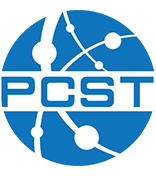Gene drive technology in the UK, US and Australian press: Exploring tensions between responsible research and responsible science communication
Author: Aleksandra Stelmach – University of Exeter, United Kingdom
Co-authors:
- Sarah Hartley – University of Exeter, United Kingdom
- Brigitte Nerlich – University of Nottingham, United Kingdom
This article explores tensions surrounding the communication of gene drive technology in comparative perspective. Gene drive is a controversial genetic engineering technique which makes it possible to modify the genetic make-up of organisms and to spread the new traits through the population. There are proposals to use gene drive technology in wild animals, e.g., to control invasive species, such as mice, or disease-carrying organisms, such as mosquitoes. Decisions involving the potential use and governance of gene drive will require an empowered and culturally relevant dialogue between stakeholders and communities, especially in the areas where gene-drive organisms could be released. To support and understand such dialogue it is necessary to gain insight into the context, including the media context, in which it takes place, as this can influence how gene drive is debated and, potentially, deployed. We focused on three countries where this technology is being developed and/or could be used: the UK, US and Australia. We used the media database Factiva to identify 159 articles on gene drive published in 2015-2019 by major media sources, including elite media. We analysed the sample focusing on metaphors and rhetorical devices. The analysis revealed significant tensions in reporting. On the one hand, scientists and the wider gene drive community promoted positive and novel discourses of biotechnology, foregrounding scientific responsibility and caution, and highlighting commitment to transparency and democratic dialogue. On the other hand, this foregrounding of scientific responsibility happened against the background of reports which represented gene drive as a high-risk technology. While the media in the UK, US and Australia differed in the ways they reported on gene drive, most news coverage fell back on sensationalist or catastrophic metaphors to convey hopes and fears related to this technology. We discuss the implications of these findings for responsible science communication.
The author has not yet submitted a copy of the full paper.
Presentation type: Individual paper
Theme: Technology
